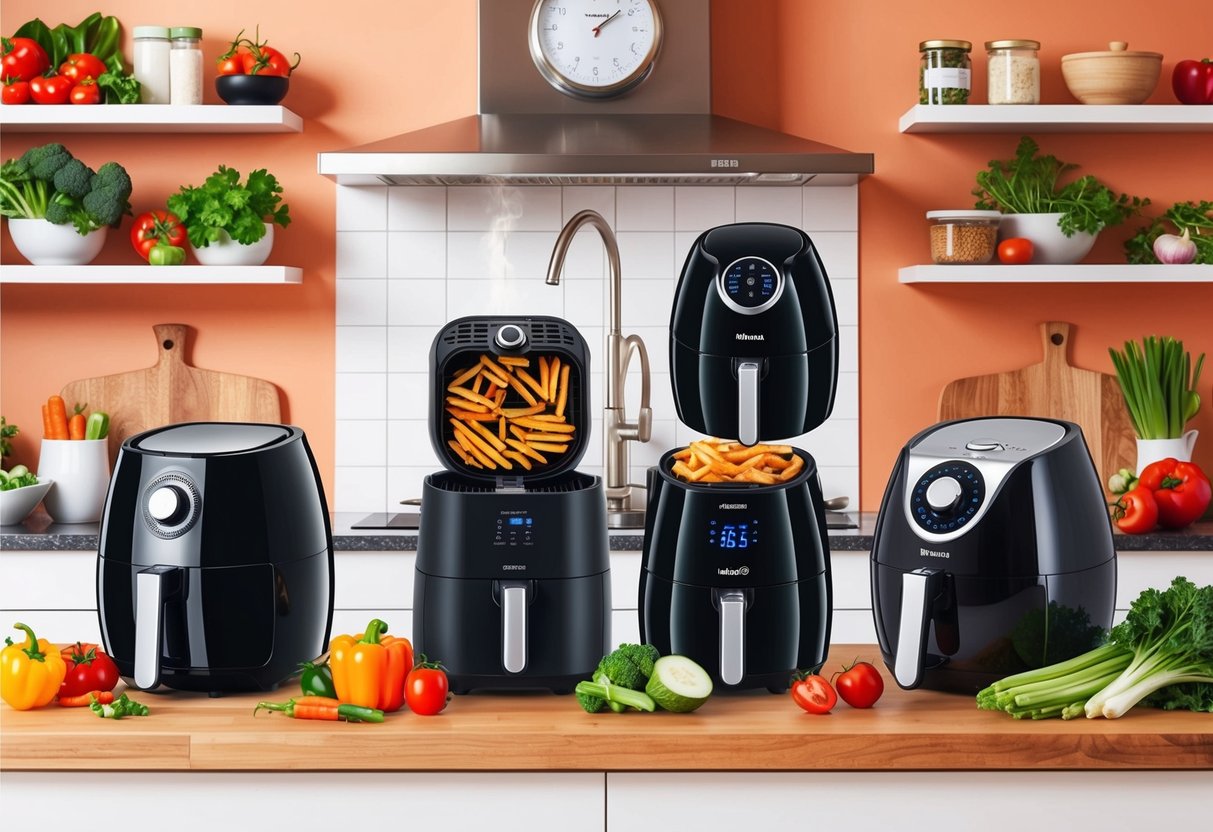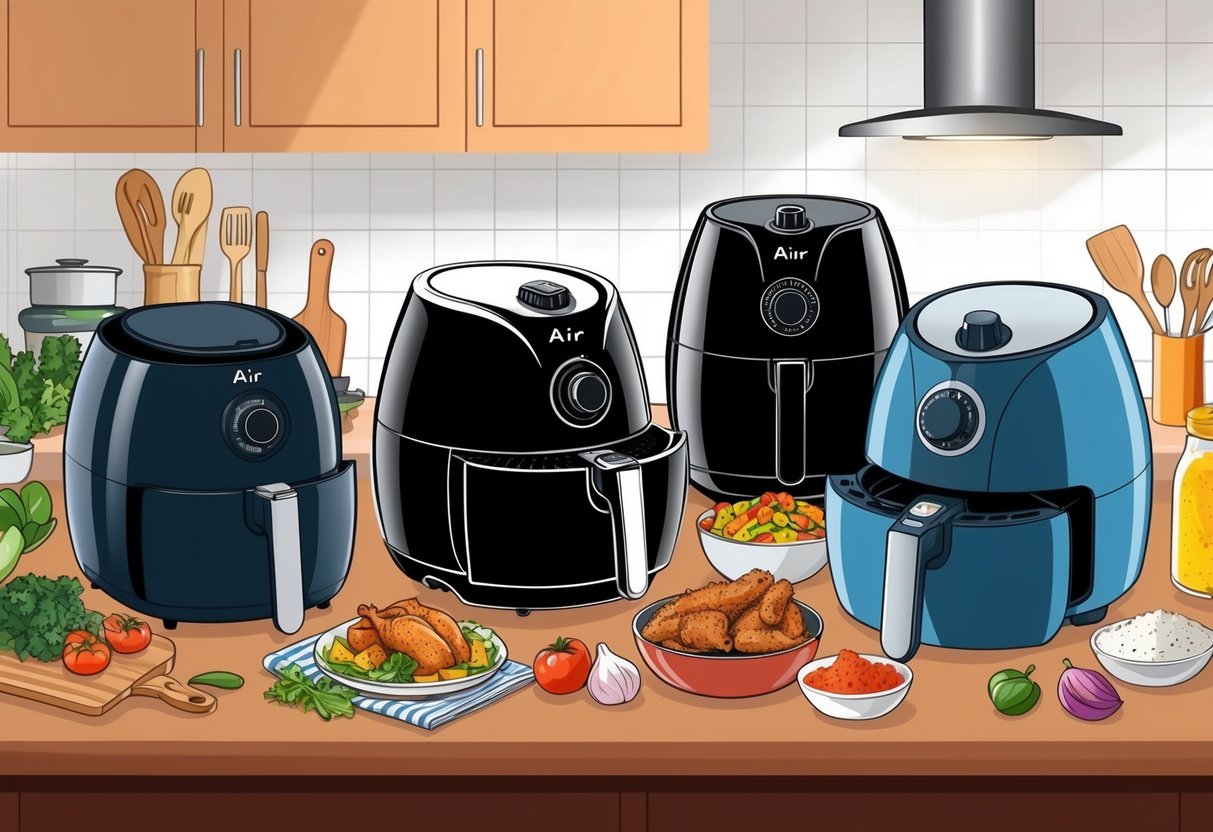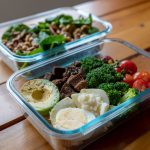
Key Features to Consider
Choosing the best air fryer means looking at more than just size and price. Elements like smart cooking presets, energy efficiency, and intuitive controls have a direct impact on daily use, performance, and satisfaction.
Cooking Functions and Presets
Advanced air fryers offer a range of cooking functions such as air frying, roasting, baking, reheating, and dehydrating. Some even include specialty tasks like broiling or proofing dough.
Multiple presets can help reduce guesswork by setting temperature and time automatically for common foods like chicken, fries, fish, and vegetables. Digital models often have touchscreens with dedicated buttons for these tasks, while manual styles rely on dials.
Models with customizable presets allow fine-tuning for personal recipes. Look for options advertised as having “smart” features or program memory, as these can improve convenience and consistency when preparing meals regularly.
Cooking Modes
Cooking modes determine how an air fryer applies heat and airflow to food. Most standard air fryers use convection cooking to circulate hot air for even crisping.
Some units add grill or rotisserie settings, expanding their versatility beyond frying. Dual-zone and multi-level models let users cook multiple foods at once, with separate temperature controls for each zone.
These features are ideal for families or meal prepping. Certain air fryers are designed for specific cooking tasks, and noting whether an appliance supports baking or dehydrating can help meet dietary needs and encourage healthier habits.
Wattage and Energy Efficiency
Wattage impacts both cooking speed and energy efficiency. Air fryers usually range from 1200 to 1800 watts.
Higher wattage models heat up quickly and handle larger batches, but can consume more electricity. However, efficient heat circulation means even powerful units are often cheaper to run than traditional ovens, especially for small portions.
Energy-efficient air fryers typically feature insulated cooking chambers and automatic shut-off. Some brands highlight low energy usage or have eco-modes.
To estimate long-term costs, check for an Energy Star label or find models that specify average power consumption in their documentation. Lower wattage models are suitable for smaller households and can save on running costs while still delivering crispy results.
Ease of Use
User-friendly controls and straightforward setup are essential for daily cooking. Digital displays make reading time and temperature simple, while one-touch preset buttons reduce steps in the cooking process.
Clear labeling on dials and buttons improves accessibility. Removable baskets and nonstick coatings support easy cleaning and maintenance.
Many brands highlight dishwasher-safe accessories, which can be a significant time-saver. Look for compact designs that save counter space but do not sacrifice performance.
Noise level and stable construction also matter, as these affect comfort and confidence during operation. A well-designed air fryer should offer quick assembly, intuitive operation, and easy-to-clean parts.
For more details about top options with user-friendly features, consult guides such as this selection of the best air fryers.
Capacity and Size Guide

Matching the air fryer’s size to your available kitchen space and your typical meal portions is essential. These appliances come in a range of configurations, and cooking racks or baskets can impact how much food gets cooked at once and how it cooks.
Choosing the Right Size for Every Kitchen
Air fryer capacity determines how much food you can prepare per batch. Compact models around 2 quarts are best for singles or couples.
Families of four frequently choose appliances with a 6-quart cooking basket, which balances cooking space with countertop footprint. Larger models above 8 quarts suit those who entertain or meal prep in bulk.
Available kitchen countertop space also matters. Compact air fryers fit easily into small kitchens or apartments without dominating the prep area.
Those with larger kitchens can opt for bigger appliances, but should always ensure the air fryer will fit under cabinets. The right size depends on daily kitchen needs and family size.
A quick comparison of capacity options:
| Family Size | Suggested Capacity |
|---|---|
| 1-2 people | 2 quart |
| 3-4 people | 6 quart |
| 5+ people | 8+ quart |
Models such as the Instant Vortex Plus 6-Quart are often highlighted as a great fit for most families.
Cooking Space and Racks
Cooking space is more than just advertised quart size. The design of the cooking basket and the inclusion of racks impact usable space and air circulation.
Some air fryers feature a single deep basket, making them ideal for traditional frying and roasting tasks. Others provide multiple racks, allowing for multi-layer cooking.
Multi-rack systems let users cook different foods at once, such as vegetables on one layer and proteins on another, without flavor crossover. This flexibility is particularly useful in multi-functional kitchen appliances, reducing the need for separate devices.
However, stacking food too tightly can restrict airflow, potentially affecting even cooking and crispiness. Removable and dishwasher-safe racks simplify cleanup, making the air fryer more appealing as a daily-use small kitchen appliance.
Households should consider what types of meals they plan to make most often, as racks can optimize the appliance for baking, dehydrating, or roasting multiple dishes at the same time. Notably, premium models, like those recommended by Wirecutter, often include accessory racks and improved internal layouts for more efficient use of cooking space.



